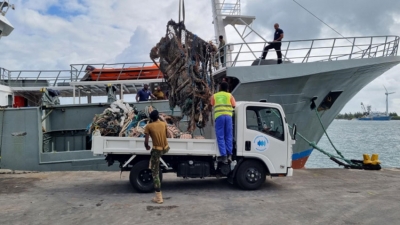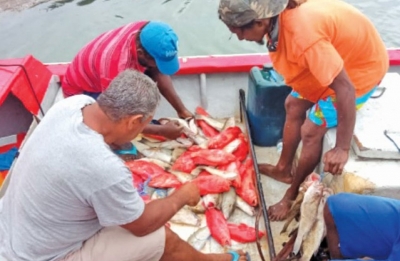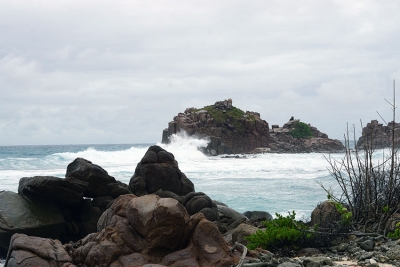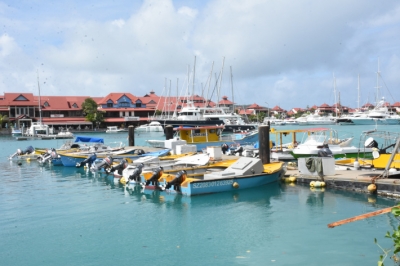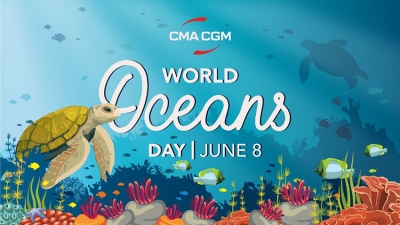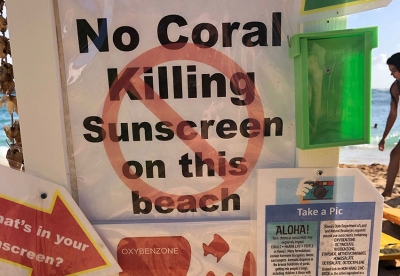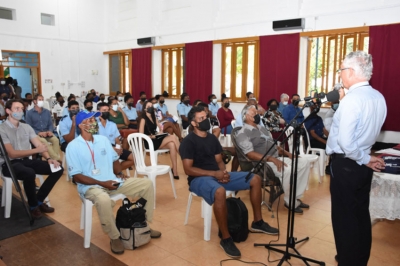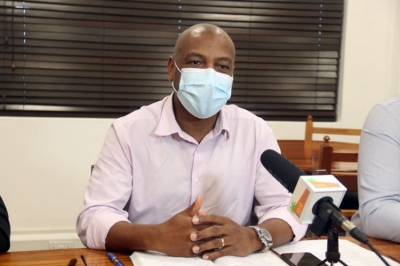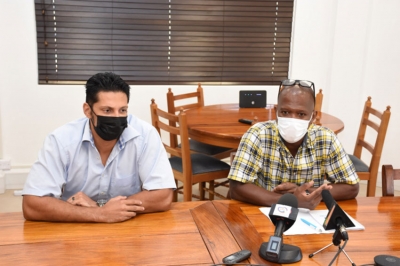
Super User
FAD clean-up expedition bears fruit
The Saya de Malha vessel made its return to Port Victoria yesterday after a 10-day expedition of the first FAD clean-up exercise in Seychelles which has been described a success.
Full enforcement of fishery management plan kicks in on October 1
(Seychelles Nation 23.9.2022) Effective October 1, 2022 any person who contravenes the Fisheries (Mahé Plateau Trap and Line Fishery) Regulations, 2021, under the Fisheries ACT (Act 20 of 2014) will be committing an offence and if found guilty, will be fined up to R20,000.
Efforts to pass global ocean protection treaty fail
(BBC News) A fifth effort to pass a global agreement to protect the world's oceans and marine life has failed. Talks to pass the UN High Seas Treaty had been ongoing for two weeks in New York, but governments could not agree on the terms.
Fishermen at odds wit Luxury development
(Seychelles Nation) The Roche Caiman Fishermen Association has said it opts to remain in its current location at the entrance of Eden Island for now, and wants to co-exist with the luxurious residential marina, built on reclaimed land.
World Oceans Day: CMA CGM continues with its commitment to restoring coral reefs
- The CMA CGM Group is continuing with its worldwide Reef Recovery program.
- Five coral nurseries in Australia, Florida, the Philippines, and Seychelles.
- CMA CGM, committed to the environment and our oceans.
How sunscreen hurts corals
While we've known for a while that oxybenzone, an ingredient in sunscreen, can damage and kill coral reefs, the exact mechanism was unknown. A study in Science has now found that oxybenzone only kills sea anemones and mushroom corals when they’re exposed to sunlight. When the corals are exposed to both oxybenzone and UV light, they metabolize the chemical in a way that turns it into a "potent photosensitizer." This causes damaging radicals to form, which are toxic to the animals. It was also found that the coral’s symbiotic algae absorb the toxins produced by the metabolized oxybenzone and protects the coral. This means that corals that are already bleached and therefore lack the algae, may be even more vulnerable to sunscreen damage. Read more: https://www.science.org/doi/10.1126/science.abn2600
Australian researchers locate what is believed to be the largest plant on Earth
Australian researchers have located what is believed to be the largest plant on Earth—and they estimate it's at least 4,500 years old stretching across 180 km. The discovery of the single plant or "clone" of the seagrass Posidonia australis blew people away. The researchers sampled seagrass shoots from across Shark Bay's variable environments and generated a "fingerprint" using 18,000 genetic markers. Just one plant has expanded over 180km in Shark Bay, making it the largest known plant on Earth. The existing 200 km2 of ribbon weed meadows appear to have expanded from a single, colonizing seedling. Read more: Largest plant on Earth is 4,500 years old: A 180 km seagrass field found to be one immense clonal plant
Praslin fishers see benefit of managing fish stock
(Seychelles Nation 30.3.22) : A voluntary project by the fishing community on Praslin aimed at protecting fish stocks has produced positive results, to the satisfaction of all involved. The Praslin Fishers Association in collaboration with the Seychelles Fishing Authority (SFA), environmental NGO ‘ANBA LAO’ yesterday presented their findings on the voluntary fisheries zone closure on Praslin.
Seychelles-flagged purse seiner vessels to operate under new legal framework
(Seychelles Nation 10.12.21) The operations of Seychelles-flagged purse seiner vessels will as from January 1, 2022 be regulated under a new legal framework, in addition to the regulations enforced by the Seychelles Maritime Safety Administration (SMSA).
International Climate Initiative (IKI) project launched in Seychelles
(Seychelles Nation 22.10.21) The IKI Blue Economy project FishPath component was officially launched with an online public meeting on Wednesday this week. It was followed by a press conference by Dr Ameer Ebrahim, the focal point for IKI project and the principal fisheries scientist at the Seychelles Fishing Authority (SFA) and Vincent Lucas, the chief fisheries officer at SFA and the focal point for tuna fisheries component.
